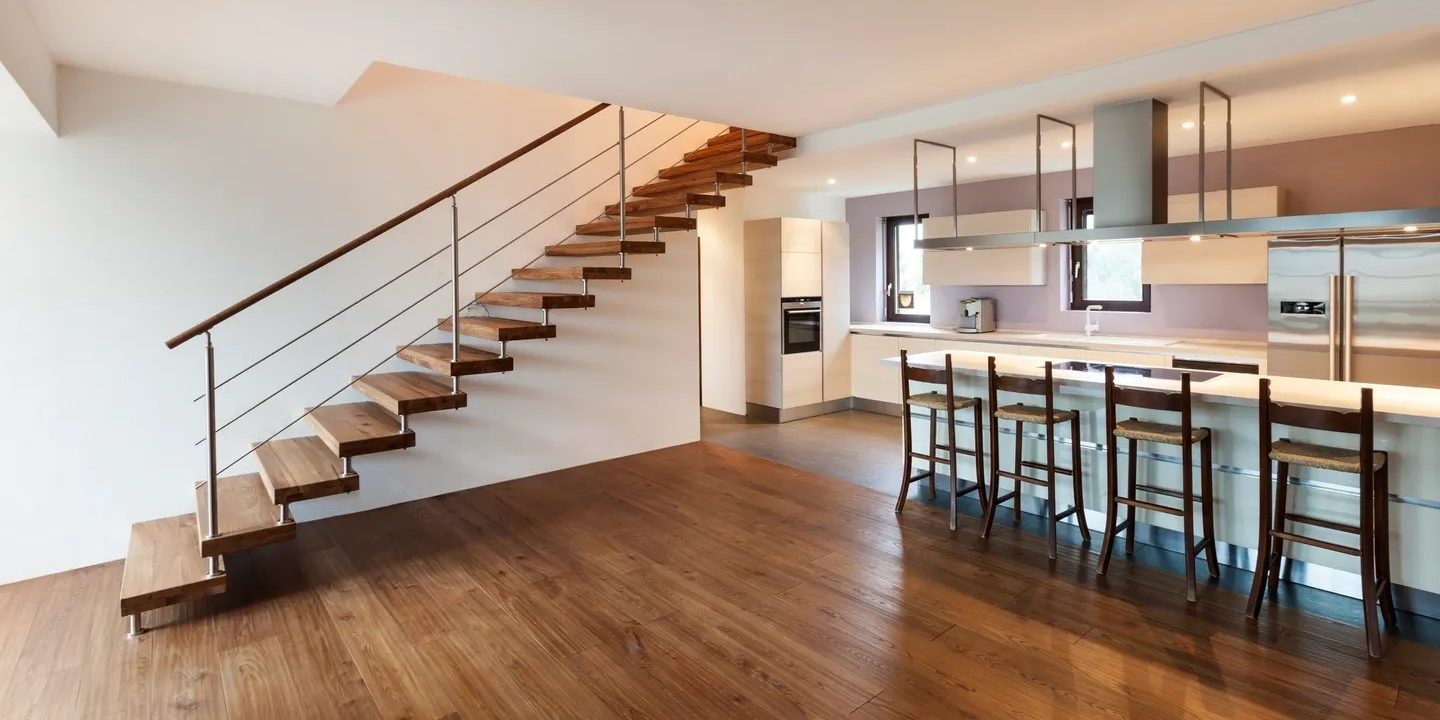Versatile, robust and well-priced, vinyl plank flooring makes a great addition to any home. Designed to mimic natural wood flooring, the material boasts many advantages over the real stuff. It can be installed in places real wood doesn’t belong well, wears well, feels warm and soft underfoot and is easy to maintain. All vinyl flooring is a less-expensive option, but it may not be the most environmentally sound choice.
Roll, Tile or Plank
Vinyl flooring, which has been around since the 1970s, is made up of four distinct layers: felt or fiberglass topped with a printed and embossed sheet coated with clear vinyl and finally finished with a clear, protective urethane top layer. The product is available in sheets, tiles and planks. Sheet vinyl comes in 6- or 12-foot-wide rolls and can be colored and textured in a variety of ways. Vinyl tiles often mimic ceramic tiles in look and texture. Vinyl planks are just that — planks. They come in a variety of wood-grain texture and finishes and can be installed like wood in a regular, herringbone or bias pattern.
Go Where No Wood Has Gone Before
Basically waterproof, vinyl plank can be installed in places wood or laminate flooring shouldn’t, such as kitchens, bathrooms, laundry rooms and basements. It is often treated with an antimicrobial agent helping the floor resist mold, mildew and bacteria. The material is durable and scuff-resistant, making it perfect for high-traffic, hard-wearing areas such as family rooms, entryways, playrooms and children’s bedrooms. It feels warm and soft underfoot so it’s comfortable to stand on for long periods of time. Because it’s resilient, dropped dishes or glasses have a better chance of surviving the fall. The product is DIY-friendly, unlike real wood planks. It doesn’t dent or scratch easily, but despite its robustness, vinyl plank flooring is susceptible to cuts and tears, especially when heavy furniture is moved across it.
Good Housekeeping
Caring for vinyl plank flooring is easy. Wipe up spills quickly with a soft cloth while avoiding abrasive scrubbing tools. The floor should be swept or vacuumed regularly to keep loose dirt from scratching the surface. Turn your vacuum’s beater bar off, or it may visibly damage your floor’s surface. Vinyl plank flooring may fade in direct sunlight, so close your drapes on bright days. Rubber- or latex-backed mats may permanently discolor your floor. Choose vinyl-backed mats or a colorfast woven rug instead.
Balancing Green
Despite all of its advantages, vinyl plank flooring is still plastic, and that means it’s not the greenest choice. Unlike wood, vinyl is not a renewable resource and, though long-lived, eventually ends up in the landfill. Vinyl flooring is made of polyvinyl chloride. PVC is known to off-gas, releasing volatile organic compounds that harm indoor air quality. Manufacturers are responding to this problem by producing vinyl flooring with some percentage of post-consumer recycled content. They are also moving toward low-VOC inks and dyes.
https://homeguides.sfgate.com/vinyl-plank-flooring-good-product-91080.html
